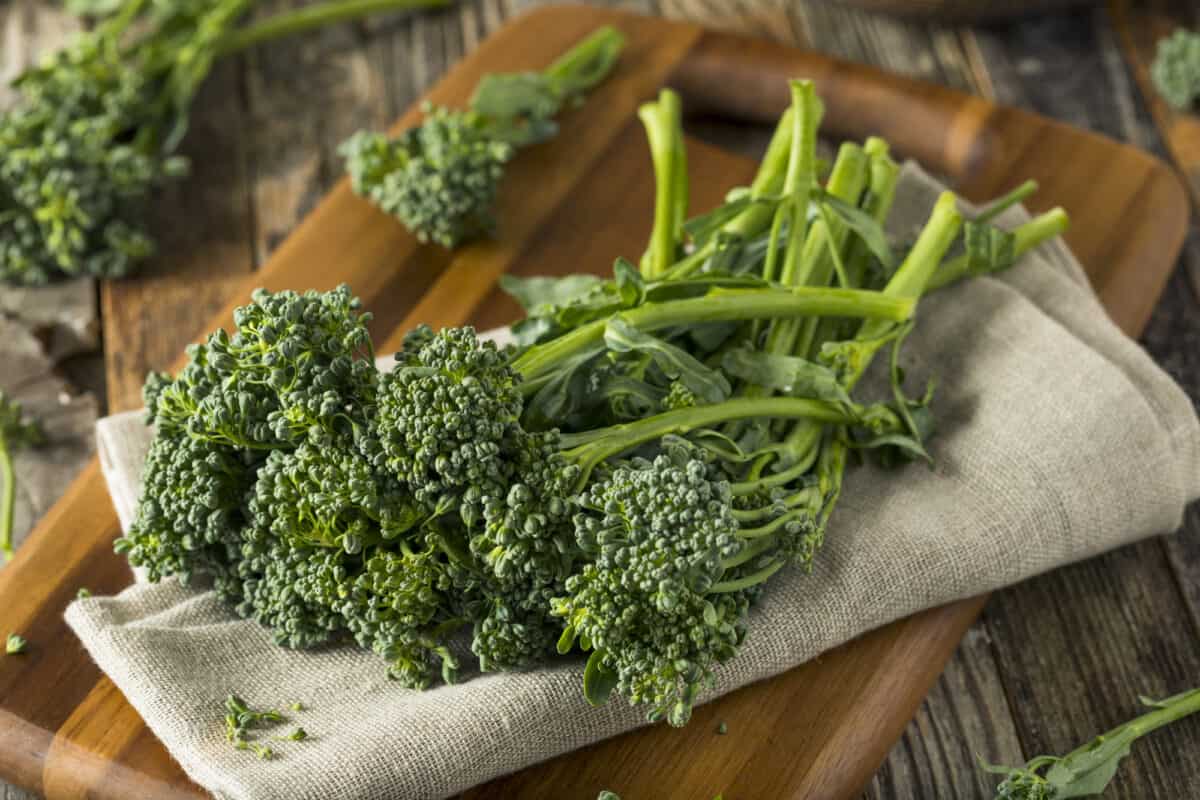

Articles
How To Store Broccolini
Modified: December 7, 2023
Learn the best techniques for storing broccolini to keep it fresh and crisp. Read our informative articles for valuable tips and tricks to extend its shelf life.
(Many of the links in this article redirect to a specific reviewed product. Your purchase of these products through affiliate links helps to generate commission for Storables.com, at no extra cost. Learn more)
Introduction
Broccolini is a delicious and nutritious vegetable that is often used in various dishes. Whether you’ve grown it in your garden or bought it from the supermarket, knowing how to store broccolini properly is essential to maintain its freshness and flavor. By following the right storage techniques, you can ensure that your broccolini stays fresh for a longer time, allowing you to enjoy it in all its glory.
In this article, we will explore the reasons for storing broccolini, general storage guidelines, and different methods you can use to store broccolini in the refrigerator, freeze it, or store blanched and cooked broccolini. Additionally, we will provide some useful tips for extending the shelf life of this vibrant vegetable. So, let’s dive in and discover how to store broccolini to keep it fresh and delicious.
Key Takeaways:
- Proper storage of broccolini is essential to maintain its freshness and flavor, whether in the refrigerator or freezer. Follow general guidelines and specific methods to extend its shelf life.
- Utilize helpful tips such as storing unwashed, proper trimming, and vacuum sealing to maximize the shelf life of broccolini. Enjoy this nutritious vegetable for an extended period with these storage techniques.
Read more: How To Store Store-Bought Bread
Reasons for Storing Broccolini
There are several reasons why you may want to store broccolini. Whether you have a surplus of broccolini from your garden or you found a great deal at the grocery store, knowing how to properly store it can help you avoid wasting this flavorful and nutritious vegetable. Here are a few reasons why you might need to store broccolini:
- Surplus or excess: If you have grown broccolini in your garden or purchased a large amount, you may need to store it for later use to avoid it from going bad.
- Meal planning: Storing broccolini allows you to plan meals in advance by having it readily available for use in recipes.
- Bulk buying: If you come across a sale or want to stock up on broccolini, knowing how to store it properly will prevent waste and ensure you can enjoy it over a longer period.
By understanding these reasons, you can appreciate the importance of proper storage techniques to preserve the freshness, taste, and nutritional value of broccolini. Now that we know why we might need to store broccolini, let’s explore the general guidelines for storing it.
General Storage Guidelines
Before diving into specific methods of storing broccolini, it’s important to understand some general storage guidelines that apply to this versatile vegetable. By following these guidelines, you can help prolong the shelf life and maintain the quality of broccolini:
- Temperature: Broccolini should be stored at a cool temperature, ideally between 32°F (0°C) and 40°F (4°C). This helps slow down the natural deterioration process and keeps the vegetable crisp and fresh.
- Humidity: Broccolini thrives in a humid environment, so it’s important to store it in a slightly damp environment. You can achieve this by loosely wrapping the broccolini in a damp paper towel or storing it in a perforated plastic bag.
- Avoid moisture: While broccolini needs some humidity, excess moisture can cause it to spoil quickly. Make sure to remove any excess moisture from the vegetable before storing it.
- Avoid exposure to sunlight: Broccolini should be stored in a dark and cool place to prevent it from wilting and losing its nutritional value.
- Avoid contact with ethylene-producing fruits: Broccolini is sensitive to ethylene gas, which is released by some fruits like apples, bananas, and tomatoes. Keep broccolini away from these ethylene-producing fruits to prevent premature wilting.
By following these general storage guidelines, you can help preserve the freshness and quality of broccolini. Now, let’s explore some specific methods for storing broccolini in the refrigerator.
Storing Broccolini in the Refrigerator
Refrigeration is one of the most common and effective methods for storing broccolini. It helps maintain its freshness and crispness for a longer period. Here’s how you can store broccolini in the refrigerator:
- Preparation: Start by removing any rubber bands or ties from the broccolini bunch. This allows for better air circulation and prevents condensation, which can cause the vegetable to spoil.
- Cleaning: Give the broccolini a quick rinse under cold water to remove any dirt or debris. Pat it dry using a paper towel or a clean kitchen towel.
- Storage container: Place the broccolini in a perforated plastic bag or a container lined with a damp paper towel. The perforations or damp paper towel will help maintain the right level of humidity while preventing excess moisture.
- Storage location: Put the container or bag of broccolini in the vegetable crisper drawer of your refrigerator. This drawer provides a slightly higher humidity level and maintains a stable temperature.
- Duration: Broccolini can be stored in the refrigerator for up to 5 to 7 days. However, it is best to consume it as soon as possible to enjoy its peak freshness.
Remember to check the broccolini occasionally for any signs of spoilage. If you notice any wilting, discoloration, or a slimy texture, it’s time to use or discard the broccolini.
In case you have a surplus of broccolini and anticipate not being able to consume it within the recommended time frame, freezing is a great option. Let’s explore how to freeze broccolini for long-term storage.
Freezing Broccolini
Freezing broccolini is an excellent way to preserve it for an extended period. While the texture may slightly change after freezing, it can still be used in various dishes. Here’s a step-by-step guide on how to freeze broccolini:
- Preparation: Start by preparing the broccolini as you would for cooking. Remove any rubber bands or ties and give it a quick rinse under cold water to clean it.
- Blanching: Blanching broccolini before freezing helps retain its color, texture, and nutritional value. Bring a pot of water to a boil and blanch the broccolini for 2-3 minutes. Immediately transfer it to a bowl of ice water to stop the cooking process.
- Draining and drying: Drain the blanched broccolini and pat it dry using a clean kitchen towel or paper towels. This step helps remove excess moisture, preventing the formation of ice crystals.
- Packaging: Divide the broccolini into portion sizes that you will use in the future. Place the portions in freezer-safe bags or airtight containers. Flatten the bags or press out any excess air from the containers to prevent freezer burn.
- Labeling: Label the bags or containers with the date of freezing to keep track of its freshness. This allows you to use the oldest broccolini first.
- Freezing: Place the packaged broccolini in the freezer. Ensure that the temperature is set to 0°F (-18°C) or below to maintain optimal freezing conditions.
Frozen broccolini can be stored in the freezer for up to 8 to 12 months. It is important to note that the longer it is stored, the more the quality may deteriorate. To use frozen broccolini, thaw it in the refrigerator overnight before incorporating it into your favorite recipes.
If you prefer to blanch broccolini before freezing, let’s explore how to store blanched broccolini for future use.
Store broccolini in the refrigerator in a plastic bag or airtight container. It will stay fresh for up to 5 days. Avoid washing it until you’re ready to use it to prevent moisture buildup.
Read more: How To Store Basil From Grocery Store
Storing Blanched Broccolini
Blanching broccolini before freezing helps retain its color, texture, and nutritional value. If you’ve already blanched your broccolini and want to store it for later use, follow these steps:
- Cooling and drying: After blanching the broccolini, transfer it immediately to a bowl of ice water to cool it down. Once cooled, remove the broccolini from the ice water and allow it to dry completely. Excess moisture can lead to freezer burn, so make sure the broccolini is thoroughly dried.
- Packaging: Divide the blanched and dried broccolini into portion sizes that you will use in the future. Place the portions in freezer-safe bags or airtight containers.
- Labeling: Label the bags or containers with the date of blanching to keep track of its freshness. This ensures that you use the oldest broccolini first.
- Freezing: Place the packaged blanched broccolini in the freezer. Make sure the temperature is set to 0°F (-18°C) or below for optimal freezing conditions.
Blanched broccolini can be stored in the freezer for up to 8 to 12 months. Keep in mind that the quality may gradually decrease the longer it is stored. Thaw the blanched broccolini in the refrigerator overnight before using it in your recipes.
Now, let’s explore how to store cooked broccolini if you have leftovers or want to prepare it in advance.
Storing Cooked Broccolini
If you have leftover cooked broccolini or want to prepare it in advance for convenience, here’s how you can store it:
- Cooling: Allow the cooked broccolini to cool down to room temperature before storing it. Placing hot broccolini directly in the refrigerator can raise its internal temperature, leading to bacterial growth.
- Storage container: Transfer the cooled cooked broccolini into an airtight container or resealable bag. Make sure the container is clean and dry.
- Labeling: Label the container with the date of cooking to keep track of its freshness. It’s best to consume cooked broccolini within 3 to 4 days.
- Refrigeration: Place the container of cooked broccolini in the refrigerator. The temperature should be set to 40°F (4°C) or below to maintain food safety and quality.
Cooked broccolini can be stored in the refrigerator for 3 to 4 days, but it is advisable to consume it as soon as possible to ensure the best taste and texture. You can reheat the cooked broccolini by steaming, sautéing, or microwaving it before serving.
Remember, like any leftover food, always use your senses to determine if the cooked broccolini is still safe to consume. If you notice any strange odor, discoloration, or texture changes, it’s best to discard it.
Now that we’ve covered the various methods of storing broccolini, let’s explore some additional tips to help you extend its shelf life.
Tips for Extending Shelf Life
To maximize the shelf life and freshness of broccolini, here are some helpful tips:
- Store unwashed: It’s best to store broccolini unwashed until you’re ready to use it. Washing it too early can introduce moisture, causing it to spoil more quickly.
- Trim as needed: Remove any damaged or wilted parts of the broccolini before storing it. This helps maintain its overall quality and prevents the spread of spoilage.
- Keep it dry: Excess moisture can lead to the growth of mold and bacteria. Make sure the broccolini is dry before storing it in the refrigerator or freezer.
- Avoid overcrowding: Proper air circulation is crucial to maintain the freshness of broccolini. Avoid overcrowding it in the storage container to prevent condensation and spoilage.
- Inspect regularly: Check on your stored broccolini periodically to catch any signs of spoilage early. Remove any spoiled or wilted pieces to prevent them from affecting the rest of the batch.
- Use vacuum sealing: Vacuum sealing is an effective method for extending the shelf life of broccolini. It removes excess air and helps prevent freezer burn when storing it in the freezer.
- Consider blanching: Blanching broccolini before freezing can help preserve its color, texture, and nutrients. However, if you’re short on time or prefer not to blanch, you can still freeze broccolini directly.
- Properly label and date: It’s essential to label each storage container or bag with the date of storage. This ensures that you use the oldest broccolini first and helps you keep track of its freshness.
By following these tips, you can extend the shelf life of broccolini, minimize food waste, and always have this versatile vegetable on hand for your culinary creations.
Final Thoughts
Knowing how to store broccolini properly is essential for preserving its freshness, flavor, and nutritional value. Whether you choose to store it in the refrigerator or freezer, blanch it or store it cooked, following the right techniques will ensure that your broccolini remains in its best condition.
Remember to always use your senses to determine if the broccolini is still fresh and safe to consume. When in doubt, it’s best to err on the side of caution and discard any broccolini that shows signs of spoilage.
Now that you’re equipped with the knowledge of how to store broccolini, you can confidently buy, grow, and enjoy this delicious vegetable without the fear of it going to waste.
Conclusion
Proper storage techniques are crucial for maintaining the freshness and quality of broccolini. Whether you have a surplus from your garden or want to stock up on this nutritious vegetable, knowing how to store broccolini ensures that you can enjoy it for an extended period.
In this article, we explored the reasons why storing broccolini is important, including managing surplus, meal planning, and bulk buying. We also covered general storage guidelines, such as storing broccolini at cool temperatures, avoiding excess moisture, and keeping it away from ethylene-producing fruits.
Furthermore, we discussed specific methods of storing broccolini, including refrigeration, freezing, storing blanched broccolini, and storing cooked broccolini. Each method offers a different way to preserve the freshness and flavor of this versatile vegetable, depending on your needs and preferences.
In addition, we provided some valuable tips for extending the shelf life of broccolini, such as storing it unwashed, proper trimming, and utilizing vacuum sealing. These tips will help you minimize waste and make the most of your broccolini supply.
Remember to always check your stored broccolini for any signs of spoilage and use your senses to determine if it’s still fresh. By following these storage guidelines and tips, you can enjoy delicious broccolini in your meals for an extended period.
So, whether you’re cooking up a stir-fry, adding it to pasta dishes, or incorporating it into a salad, your properly stored broccolini will continue to delight your taste buds and provide you with valuable nutrients.
Now that you have the knowledge to store broccolini effectively, go ahead and confidently buy or grow this vibrant vegetable, knowing that you can savor it at its best for longer periods of time.
Frequently Asked Questions about How To Store Broccolini
Was this page helpful?
At Storables.com, we guarantee accurate and reliable information. Our content, validated by Expert Board Contributors, is crafted following stringent Editorial Policies. We're committed to providing you with well-researched, expert-backed insights for all your informational needs.




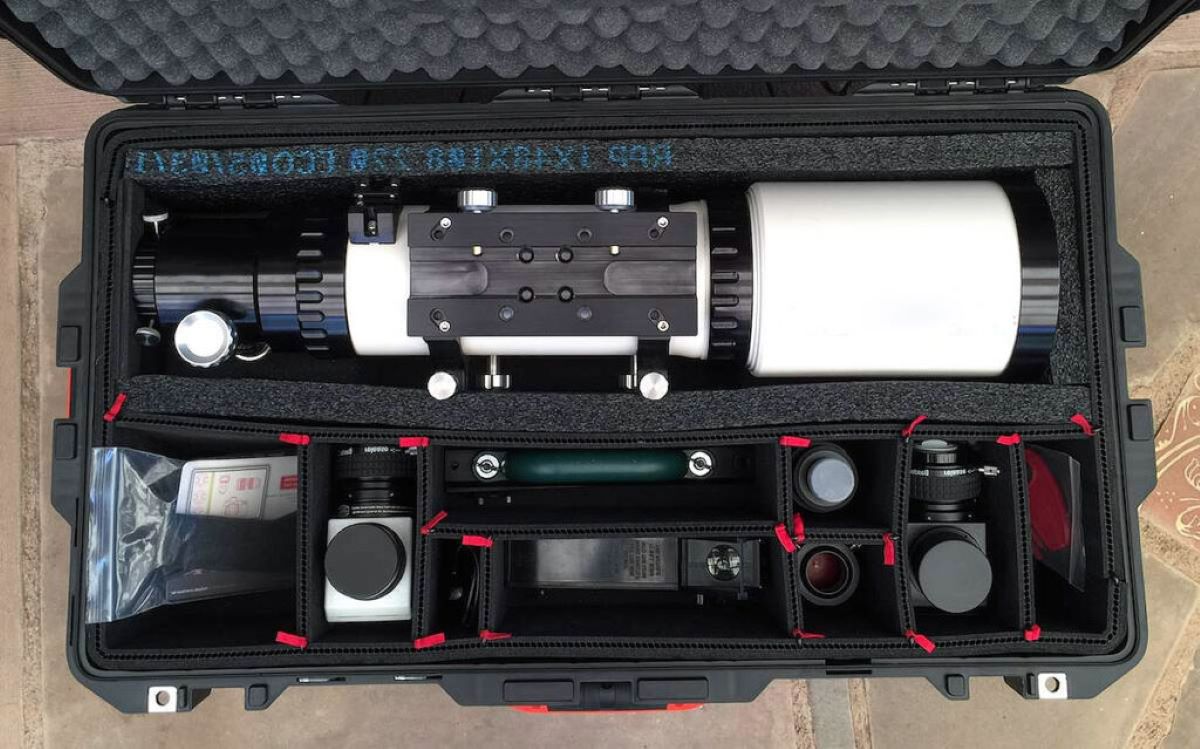





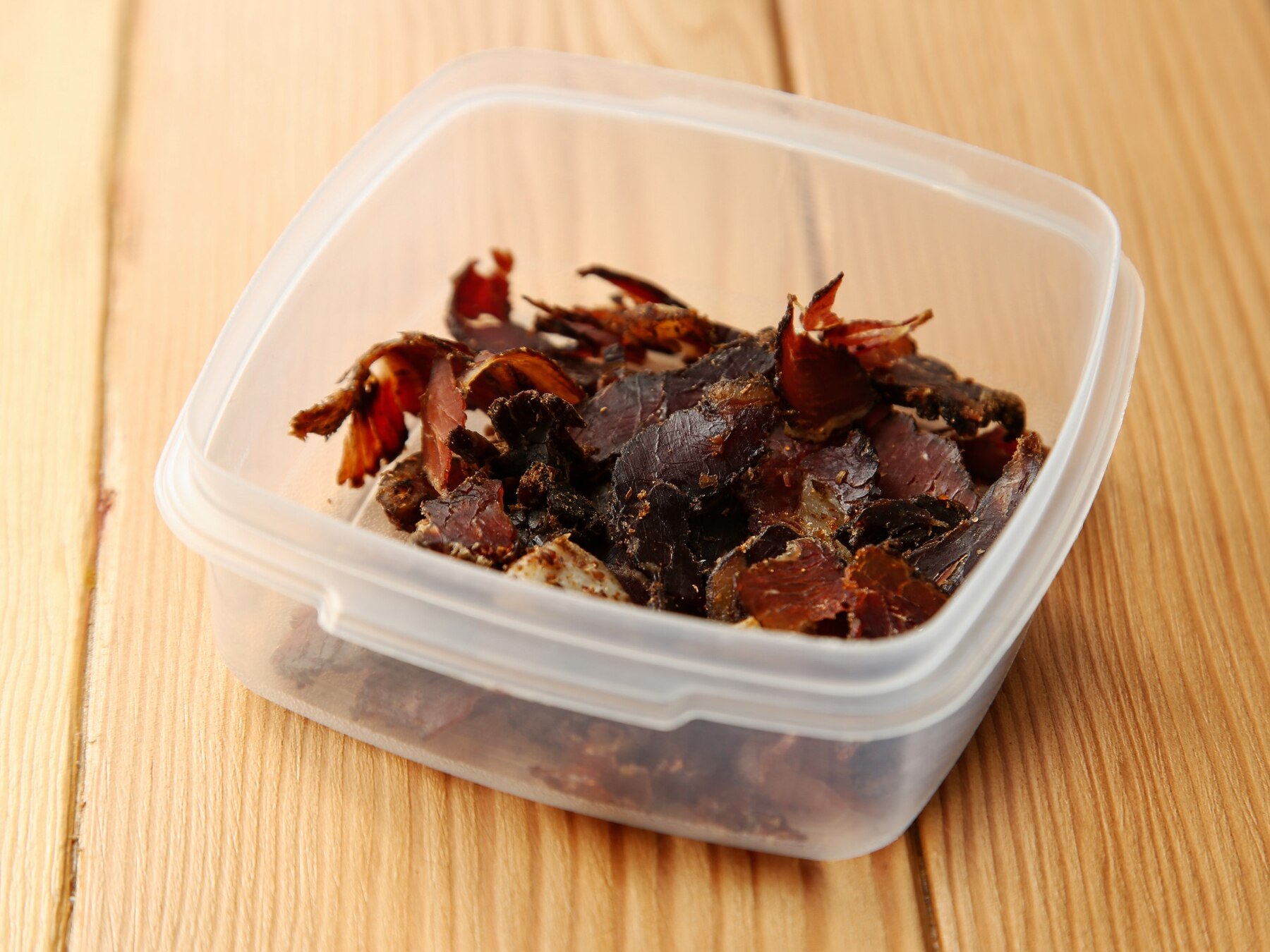
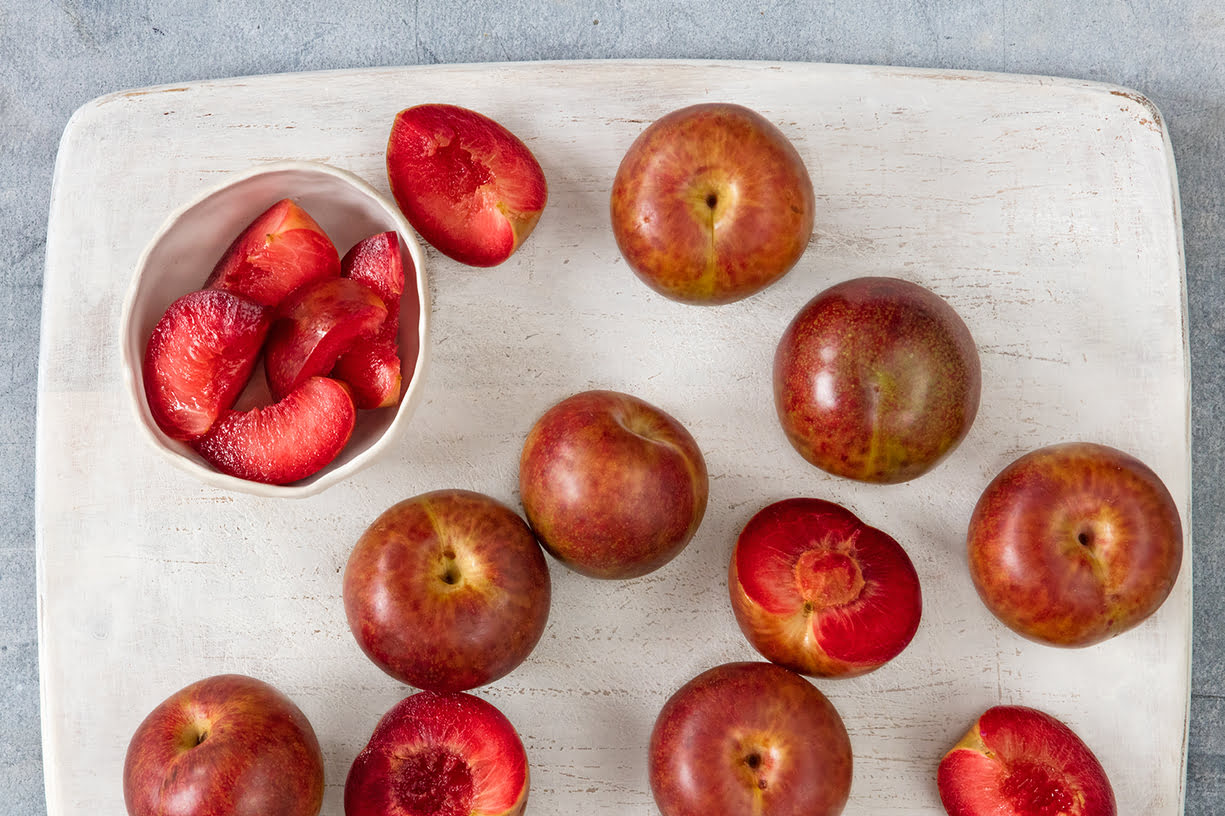
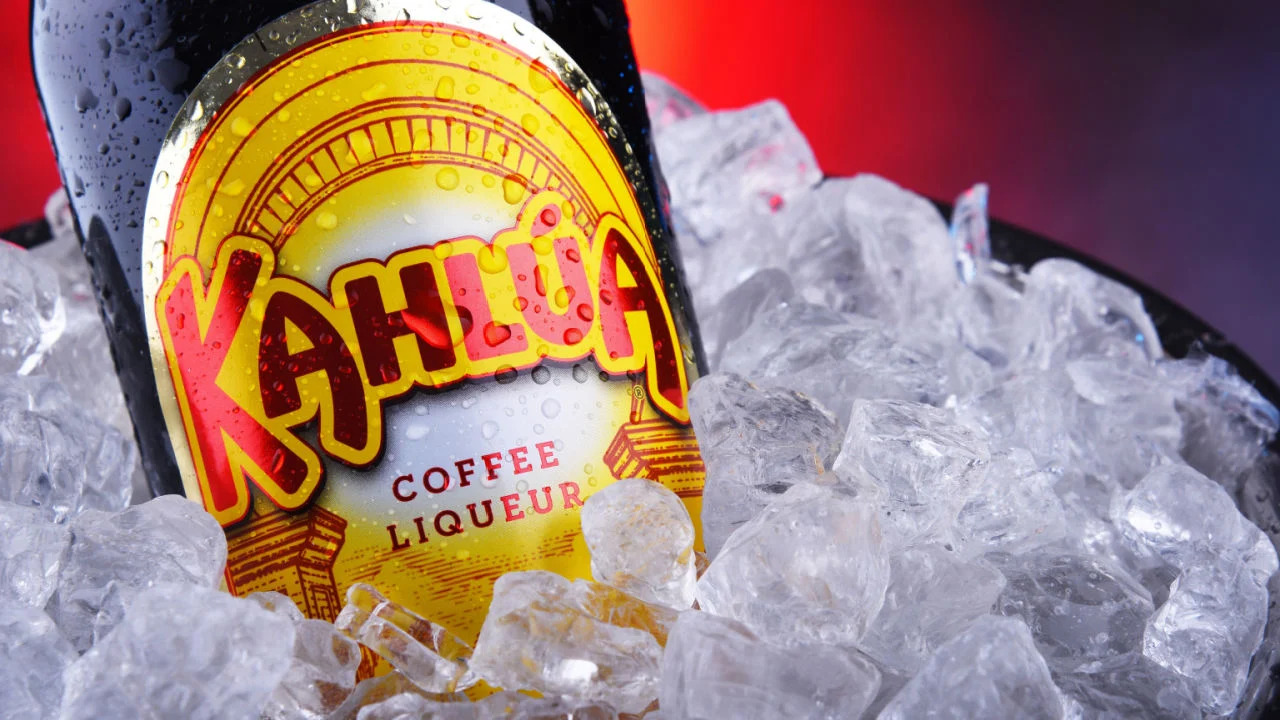


0 thoughts on “How To Store Broccolini”